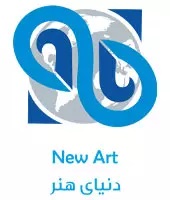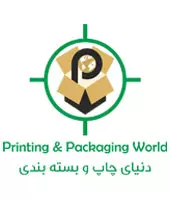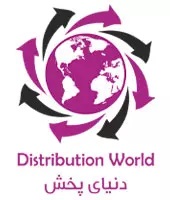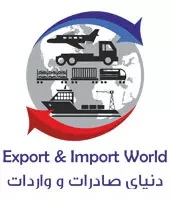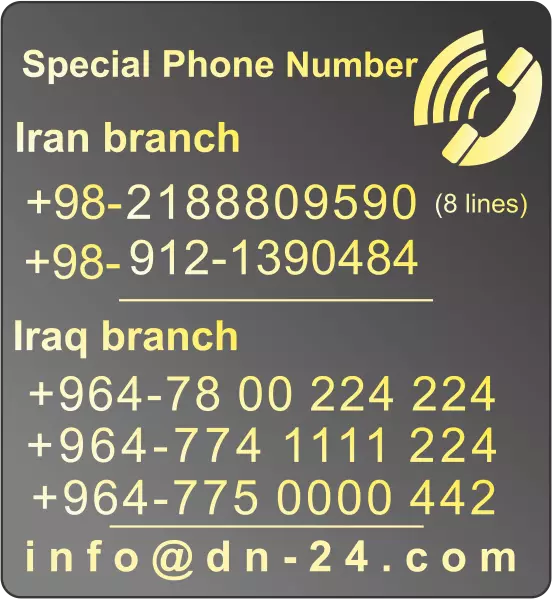- Chapter1 -Consulting and Marketing
- Chapter2 – Designing, Photography, Filmmaking
- Chapter3 – Printing, Packaging, Post-print
- Chapter 4- Environmental Advertising and Exhibition Services
- Chapter 5 – Audiovisual Advertising and Electronic Marketing
- Chapter 6 – Advertising gifts
- Chapter 7- The world of distribution
- Chapter 8- Export and Import
Audio and Visual Advertisements
A) Introduction:
Targeted advertising is advertising that is planned to deliver an advertising message (or messages) to an audience. Among the targeted advertising methods, audiovisual advertising is considered one of the most effective advertising. For this type of advertising, an advertising teaser should be created according to the type of product or service. It is not enough that you only advertise in video media! You must advertise correctly and professionally.
Visual Advertising Techniques
Successful brands use visual advertising techniques to not only sell their products, but also encourage consumers to adopt a certain lifestyle. When a company’s website enhances our state of mind and goes beyond providing information to create an experience, our perception of a brand changes. Meaning we can even get emotionally invested in it. This positive feeling increases our brand attachment, which in turn makes us loyal customers and refers our family members and friends to that brand. Knowing that buyers often make decisions through emotions; Depending on how challenging their ad campaign is, digital and traditional advertisers use specific techniques to influence the opinions of buyers. Therefore, successful brands don’t just tell consumers to buy their products; they encourage them to make decisions based on emotions. To help you understand the basic mechanisms that work well in attracting customers, here are nine visual advertising techniques.
1- Choosing the Right Color
Color is powerful, because it can affect our purchase feeling. Choosing the right color in your design and advertising plans plays a very important role in the success of your visual campaigns. Choosing the right color requires psychological understanding. How each light shade affects your visual design? However, there is no universal ideal color scheme for a general audience or even a specific socio-cultural group. What has been obtained from relevant studies is that color affects the decision-making process of buyers.
Advertisements, posters and billboards use color. to attract the attention of the audience. Different colors evoke different emotions in the audience. For example, in advertising, red and yellow colors are used for a specific reason, while red evokes excitement. (And it can even increase the heart rate.) Yellow stimulates happiness and optimism.
2- Repetition of Advertisements
Repetition is used in advertising as a way to keep a brand or product at the forefront of consumers’ minds. Repetition can create brand familiarity. But it can also lead to consumer fatigue. To be effective, repetition must be used sparingly, because too much repetition can be a negative advertising strategy. Advertisers can create a sense of product and brand familiarity by reusing specific images, such as a logo. Repetition is one of the most powerful visual advertising techniques; because it is a good way to make consumers aware of the existence of the brand. But it should be used wisely and appropriately. Because it may end up causing consumers to hide unwanted ads from their news feed or unsubscribe from their email list.
3- Establishing a Direct Gaze
Another powerful visual advertising technique is Direct Gaze. This is the most difficult task. Because the main character of your visual media needs to fully believe in the brand message in order to be effective. Use the experiences of advertisers who use prominent figures to promote your brands or products. In the direct gaze, the audience can detect even the slightest doubt, doubt or fear. As a result, it considers the ad unreliable. On the other hand, the direct look at the prominent personality extends the world of online and offline advertising. In real life, direct gaze is a prominent social cue that plays an important role in social interaction and communication. Directly looking at a person includes the demand or request and also expects a response. The same principle applies even to still images.

4- Body Language
Body language is the non-verbal signals and signs used in advertising. Advertiser and marketer both use this technique in every aspect of product and brand promotion.
Coordinated and skillful use of movements, positions, expressions and facial movements will lead viewers to buy your product and promote your brand.
5- Composition
This particular method refers to the arrangement or placement of visual elements in a particular work of art. Simply put, composition should be done with the overall organization and order of elements in a visual design project.
6- Rule of Thirds
The rule of thirds is a basic composition technique which is done by dividing the image vertically and horizontally using an imaginary grid. According to this technique, important elements should be placed at the intersections of horizontal and vertical lines.
7- Vectors
This technique refers to the path your eye follows when looking at a particular image ad. Designers intentionally redirect read paths using vectors. For example, if all objects in an image are tall, long, and straight, our eye follows these straight vectors to the top of the frame. Vector lines guide our eye to the most important information in an advertisement.
Vectors are often seen in media advertising campaigns in the form of advertisements, billboards, and web ads. The inclusion of photography in advertising media depends on the theme, product, image, direction and general look and feel of the advertising marketing campaign.
8- Focal Point
Most ads use this technique to provide a distinct and eye-catching focal point instead of prominent points competing for attention. Focal points are used to emphasize the most important part of the design. Focal points are created by using contrasting colors or shapes and using white space. A successful design is one that uses strong, linear focal points to direct the viewer’s eye to the most important element of the design.
9- Symbolism
Symbolism is another visual advertising technique used to represent a specific brand, a company, and one or more (often complex) ideas. By using symbolism, advertisers can link a deeper meaning or message to the selling power of a product. For example, crystals, gemstones, or diamonds are often paired with water, both of which represent clarity and purity. Some other common symbols include an open road which represents freedom and exploration; and the lion, which represents power, superiority and glory. Colors can also be used to represent emotions: for example, red symbolizes love and passion; Green represents life and health; and black represents sexuality and seduction.
The most important reason for the success of advertising, especially visual advertising, is the intelligent use of appropriate visual advertising techniques. In this way, regardless of the media you use – TV, radio, newspaper, magazine, etc. – you must use a method that shows both the advantages and benefits of using your products and services and with customers. You make an emotional connection.
b) Stages of creating commercials (stages of creating different types of content) Studio RADN
Generally, the cost of making advertising teasers is high, so in making them, you should use the utmost creativity and initiative to convey the message of the advertisement as well as possible.
The types of content are:
(A) Real: News, Fun (Comedy), Scientific and…
Real advertising teaser is a kind of advertising teasers in which real elements of the scene are photographed. In photographing and directing this type of advertisement teaser, you can photograph the scene that may be a company, factory, production, etc., and you can use the actor in the teaser according to the written scenario. Most of the advertisements in TV and virtual media are broadcast, they are real teasers. The content of real teasers can be news, fan (comedy), scientific, documentary, etc.
(B) Animation:
Today, animated programs, with their presence in television programs, advertisements, and the Internet, as well as computer games, have taken over, if not the entire visual world, at least half of this world. For this reason, large companies, some of whose shares reach several million dollars, always try to produce and sell animation programs based on the needs of society. The field of animation was created almost 10 years after the emergence of cinema as the eighth art, and today it is called as a profitable industry. In a simple and concise way, the science of animation is the science by which images are created using computer devices and software and various methods which has different aspects such as depicting human imagination, advertising, entertainment for children (cartoons) and showing and promoting cultural issues.
The contents are created in two forms: teasers and industrial films, each of which has its own charms and uses.
(A) Teaser
The types of teasers are:
1- Advertising teaser 2- Television teaser 3- Radio teaser 4- Subtitle
1- Advertising Teaser:
Teaser in the term refers to a behavior that creates a sense of curiosity in the viewer by presenting a topic, but in general, an advertising teaser is a technique to introduce products and services in visual and audio media. Advertising teasers usually stimulate the viewer’s curiosity at first.
Nowadays, advertising teaser design is used as the most effective advertising method in the world. All these large and small companies and businesses are looking to become a brand so that they can present their products and services beyond the borders of their country, but becoming a brand requires the employment of advertising specialists and professional marketers and all of them are looking for a way to attract customers and a way for effective advertisements that stay in their minds in the shortest time. Making a smart advertising teaser is more effective than thousands of photos and hours of speech and can stay in the audience’s mind. Advertising teasers are known as an important and main element in awareness, persuasion and reminding of customers about products, brands, services and companies and large and small businesses.
Uses of Promotional Teasers:
You can use the promotional teasers made for you anywhere and promote your brand. Below are some of the most common places to show teasers:
- Teaser show in mass media such as TV and radio and…
- Teaser screening in exhibitions
- Displaying ads in conferences and seminars
- Broadcasting of advertising films in the organization’s waiting and rest rooms
- Broadcasting in public and specialized video media for advertising purposes
- Play between movies and home series
- Film production in order to report the performance of the organization
- Broadcasting of films on advertising monitors in cities
- Use in hotels and halls
- Use in educational videos
- Use in Social Media
- Use on video sharing websites
- Use on the company’s website
2- TV Teaser
Producing a teaser requires spending a lot of money and time. Therefore, using different techniques and methods, teasers should be designed and produced that have the necessary effectiveness. In general, teaser production includes three main stages: pre-production, production and post-production. Preparation of the scenario or screenplay, selection of actors, filming, sound recording, editing, etc. are among the steps that are taken in the production of a teaser.
Strategy, creativity and execution are three key elements in the success of a teaser. Successful teasers are perfect in terms of adopting a strategy. They have a creative concept and are well executed.
Choosing the ad format, like choosing the tone and style of the ad, is a part of the creative strategy. There are different formats that are used in teasers. Some teasers use a certain format and some use several formats. What is important is to choose a format that can properly convey the message of the ad and establish a close relationship with the viewer. Choosing a template depends on how and for what purpose we want to use it.
3- Radio Teaser
To prepare radio teasers, just like television teasers, it is necessary to prepare things like people’s dialogues before preparing and recording them.
In fact, it can be said that to work with any team, you first present your advertising theme. In the next stage, it is the advertising team that starts to prepare ideas and creative. These two steps are actually the prerequisites of the three main steps. The three main stages are pre-production, production and post-production.
In the pre-production stage, a kind of simulation actually takes place. In fact, all the dialogues and etc. are executed and the team makes sure of the correctness of the design and dialogues and etc. This stage is implemented because large sums of money are usually spent to prepare these teasers, so people don’t want to have any problems after doing it. The next step is production, which is very clear, during which the desired teaser is recorded. The next stage of preparing the teaser is “post-production”. During this stage, after recording the video, montage actions are performed on it. This stage takes place under the supervision of the director, during which any necessary corrections are made.
4- Subtitle
Subtitle: It is the text of the words or translation of a movie, music video, series, etc., written in other languages (for the deaf and hard of hearing and sometimes for language training) by the speakers of the show, and usually appears below the video. Each time the actors’ conversation is played in sync.
Types of Subtitles:
Subtitles are recorded in two ways, called hardsub and srt method, which is placed in a separate subtitle file. In newer movie formats such as mkv and mp4, it is possible to attach multiple subtitles to the movie, which the viewer can choose or disable if he wishes.
Subtitles are generally known with the suffix srt, although they are also available with other extensions such as smi, sub/idx, etc., but the most basic and common type of subtitle is srt. How to read these subtitles on the computer is done by professional movie playback software – km player – pot player – vlc, which are among the most famous and high quality playback software.
How to make a teaser?
- Describe your ad audience using demographics and psychology.
- Determining whether this audience views the content.
- Determine how to position your brand/product.
- Determining the company’s goals for these promotions
- Identification of advertising channel and format
- Preparing the initial text of the ad
- Add persuasive messages to your original text
- Customize your brand design, advertising channel and advertising format
- Subtitle teaser design
Making a promotional teaser includes three main steps:
- Pre-production
- Production
- Post production
One of the most important components that must be done in the production of an advertising teaser is preparing a scenario or screenplay, choosing actors, filming, dubbing, editing, etc. Meanwhile, the main success factors of a teaser are:
- Strategy or the method of presenting and transmitting the advertising message
- Innovation or creativity in displaying the advertisement message
- Implementation method
The main purpose of creating a teaser is to convey the advertising message. Sometimes a teaser has one message and sometimes it has several messages. When a teaser has an advertising message, it usually directs all targeting and audience questions to the answer, which is the advertising message. But when your teaser has several messages, you should measure the nature of the messages and use a creative strategy and scenario to introduce the messages in the teaser.
It is also important to choose a working template when making a teaser. The meaning of ad format is choosing the tone and style of the ad. These parts are a subset of strategy. There are various formats for making teasers, which are used based on the type of product, the history and approach of the advertising company, and the advertising message.
Some teasers have a specific format (short teasers) and some teasers have several related formats (long teasers). Among the most popular forms of making teasers, we can mention the story, drama, confirmation, humor, etc. In making a television and radio commercial, all the above should be considered important, but the most important factor is creativity. A smart advertiser chooses his target well, identifies his audience correctly and then hits the target center! Usually, the teasers made before the main release are shown in a small audience to get feedback. After solving the possible problems, the teaser is prepared for the main screening and finally, after purchasing the screening space, it will be screened.
The main Features of a Successful Teaser:
- Using conceptual and creative ideas
- Using visual appeal in making teasers
- Using the appropriate speed to transmit the advertisement message
- Creating a teaser based on the needs of the audience, not the taste of the employer
4 Key Features of Promotional Teasers
Advertising teasers need features to attract the audience and engage the audience’s mind even for a few seconds. Without these features, the teaser will be just an expense with the least effectiveness for the business!
1- Conceptual and Creative Ideas
Behind every advertising teaser is a goal and an idea, and it is the scenario of the teaser that determines the method of expressing the idea. If you want to have effectiveness and attractiveness in your advertising teaser at the same time, think about designing and producing creative and intelligent advertising teasers.
2- Visual and Auditory Beauty and Appeal
An advertising teaser without observing the aesthetic aspects, no matter how much it has to say, will not be noticed in the end!
3- Focused on the Audience
Before making and producing targeted advertising teasers, the audience’s mental and personality model is fully examined in order to use all the characteristics and elements of attraction to get closer to the audience’s mental model.
4- Fast and On Time
What is the best time to present your business teasers? Time management from the beginning to the production of promotional teasers will be an important factor in their effectiveness.
Narration of the text in radio advertising teasers / advertising with pleasant and expensive sounds
Todays, advertising messages reach the audience through different channels, the most common of which is radio and television. In radio, we only have the audience’s ears, while in television; we can use all the visual elements and present the content of the message in different formats.
This impact of sound is much greater in radio, because it is only sound and text that prompts us to listen. Apart from the importance of the text of the teaser and the features that must be observed in its writing, as well as the scene and images (in TV messages) and the speaker’s voice – which provides the most important information to the audience – is of great importance as far as advertisement producers are concerned. They rarely take risks and use new voices, and they often use familiar voices that guarantee work efficiency, and therefore the narration on commercial announcements is entrusted to voice actors who have a familiar voice for the audience. It is the understanding and understanding of the speaker that in this work, how he should adjust the tone and rhythm of his voice and use the strength, firmness and dignity in his voice according to the text. It should be said that the speaker of an advertisement is actually the creator of the melody of the word. With his voice, he makes the music of words, which is very important.” Finally, all factors in the production of a teaser work to achieve a goal, so whatever is effective in this effect can be included in the work, and there is no fixed rule in this case.
People Trust Familiar Voices
The experts in this field unanimously believe that factors such as the tone of the speaker, accentuation (emphasis and highlighting) on some words in order to convey a specific meaning to the audience, resonance of the voice, creating a nostalgic feeling in the listener through expressive techniques, comprehensibility of the words and pronouncing the sentences correctly , the acceptability of the messenger’s personality in the eyes of the public, the speaker’s inner belief in the message he is going to advertise, and avoiding lies and unrealistic presentation of the product, and the presence of sincerity in the advertiser’s voice are among the things that can be done in addition to a good scenario and the use of appropriate music. Create a suitable sound environment for a teaser and provide the reasons for its success.

8 key Points for Making a Teaser:
1- Focus on the audience instead of the product
The difference between advertising teaser and other types of advertising is that the characteristics of the product are not easily available to the audience. In audiovisual advertising, instead of focusing on showing the main product itself, focus your attention on the target audience.
2- Have a creative idea
Today’s audience is very smart and attentive and stops watching when they see repetitive and boring content. One of the most obvious features of a good advertising teaser is having a new and pure idea. In the meantime, your mission to introduce and introduce your product or service is to prepare content for your teaser that is both visual and informative for the new audience so that they take the time to watch it. Otherwise, if you have copied other common ideas and do not have a different look at your product, it is pointless to expect others to see your product ads differently.
3- Add some ambiguity to the teaser
You may feel that people get confused if they don’t understand something completely. But sometimes this is the opposite of reality, and adding a little ambiguity and mystery to the advertising teaser makes the viewer’s mind curious and looking for the next events. Or even watch the video several times to learn something from it. The general purpose of the advertising teaser is to attract the attention of the audience so that he does not realize it. Show the story in such a way that it remains half-finished or creates a question mark in the audience’s mind. Or prepare your teasers serially and publish them in stages.
4- Publish promotional teasers on Social Media
The whole reason for introducing or launching the product is to attract the attention of the audience as much as possible. For new businesses that don’t have that much budget for advertising, TV ads may seem a bit heavy. Fortunately, today there are enough channels and Social Media with a high audience and they are considered the best platform for publishing promotional teasers. Facebook, Twitter, Instagram are all suitable for your advertising teaser campaign. It is better to publish your campaign teaser about 20 to 30 days before the product launch so that it has the right time to influence the audience and create the right brainstorm.
5- Manage the promotional teaser time
It has been scientifically proven that people’s attention span is formed in the first 8 seconds. This means that the audience will watch your video for about 8 seconds, and if it doesn’t catch their attention during this time, they will skip it. The important point here is that you have 8 seconds to attract the user’s attention or encourage him to continue watching the teaser, so try to include your interesting points and key points in the first 8 seconds and avoid dodging.
6- Take advantage of influencer marketing
Influencers are influential people in Social Media who have a large number of followers. With some fee, you can sign a contract with them to place your teaser on their page and see more of your ads. Don’t forget that some pages have built their pages only with fake followers. Try to contract with well-known people with high engagement rates. Another thing to keep in mind is the compatibility of the desired influencer’s page with your product. Consider the sphere of activity of the influencers and choose the most relevant influencer with the product so as not to fail to attract the attention of the relevant target market.
7 – Use the countdown
Use the countdown before releasing the promotional teaser. Almost a new feature that Instagram has also used in its stories and you can take advantage of it. Using a countdown has two advantages:
- It increases the excitement of product unveiling
- It acts like a reminder and informs the audience about the exact time.
Our goal in the advertising teaser stage is to keep the audience’s mind awake about the product without talking about the essence of the product or its features.
8- Use a combination of media
Naturally, each business chooses the desired media for broadcasting its advertising teaser depending on its budget. If you are a big business and have a high advertising budget, broadcast the teaser through different media, from broadcasting on TV to city and intercity billboards to Social Media and even your brand’s podcast. Use all the desired platforms, because the audiences of these platforms may be different from each other, and in this way, you have made your voice heard by more people.
Stages of Making a Teaser
1- Be careful in making the first few seconds
The beginning of your video is very important. In order not to lose your customers, do not put any button to click. Try to start your video ad with a statement to appeal to those in your target market. Try to get your audience interested in the first few seconds. To achieve this goal, you can start your promotional teaser by asking a question or share a topic that makes your brand stand out. In some cases, you’ll find that video ads can be made with just a few images, so it’s important to start your ad with a compelling image to encourage viewers to continue watching your video.
2- Highlight the things that distinguish your brand from others
In your advertising teaser, say why your brand is unique and different from others! Share your achievements. Even put the comments of your customers in your advertisement. The more you highlight the benefits of your brand, the more effective your promotional teaser will be.
3- Be sensitive to the timing of your advertising teaser.
Avoid turning a promotional teaser into a documentary. Most advertising videos are 30 seconds or less. Consider this optimal length when creating the script for the video. Of course, it is necessary to explain that in some cases, the use of long advertising videos can also be effective. For example, if you have a story related to your brand or you want one of the company’s people to speak in your advertising teaser; a long video would be ideal. In any case, do not have unnecessary content in the promotional teaser. Keep in mind that you need to convey the message as quickly as possible and make viewers eager to watch the promotional teaser.
4- Tell viewers why they should choose you.
After watching the promotional teaser, viewers should understand why they should choose you. What makes your products or services the “right choice”? It is very important to tell the viewers the reasons for choosing you over your competitors in the promotional teaser and emphasize them.
5- Tell the ways of communication in your advertising teaser.
The purpose of any advertisement is to encourage viewers to use the products and services of that brand. Your ads must be different! We suggest that the way your customers communicate with you be filmed or introduced through text and graphics. The ideal situation is to add links at the end of the video. For example, how to visit your website for more information, how to participate in discounts, how to buy products and benefit from services should be described.
B) What is an industrial film or documentary? | Applications and production method
An industrial film or documentary is actually a video that fully shows the various stages of producing a product or providing a service, and in addition, it may show the evolution of the company or institution or factory in question and the expansion of the production line, the quality control process, the products, the team of experts, the office environment, the different departments of the company, distribution and marketing, how to interact with customers and the competitive advantages of the company or factory are displayed. Industrial film does not only include the product line.
Watching an industrial documentary for a person is just like visiting your company, institution or factory and getting to know your history, team of experts and your work process. You can share any conversation you have with your audience in this movie. You can even plan and then edit the sound of this clip to be suitable for broadcasting on the radio or making an audio podcast. The purpose of making industrial films and documentaries is to show how the goods or services are offered and to show the salient and positive points and competitive advantages. Displaying these items will attract the trust of customers as well as business partners and will display your true credibility. Therefore, the industrial documentary is actually a supplement for your advertising and marketing activities, because it attracts all audiences with any level of knowledge and any situation and builds trust. Of course, the industrial documentary has many differences from the advertising teaser. The most obvious difference is that the teaser time may be even less than 15 seconds, while the shortest industrial documentary time is 3 minutes. Industrial documentary has a slow rhythm and during that, the history of the company, different spaces and departments, the way the product is produced, the staff of experts, the characteristics of the services, the awards and honors of the company, the vision of the company and many other things are displayed and even explained by the speakers.

What is the use of documentary and industrial film?
Many industries may need to produce documentary and industrial film in order to showcase their real capabilities, develop work and effectively communicate with their customers and colleagues, including: factories, industrial workshops, production lines, refineries, power plants, chemical industries, industries food, cosmetics production laboratories, decoration industries, automobiles, household appliances, restaurants and hotels, construction projects, cultural and entertainment complexes, service companies, offices, government organizations, hospitals and clinics, banks and financial institutions and commercial centers.
But where will the created video be displayed? The created video can be used in many different places. including placing the relevant DVD in the product pack or presenting it to customers who receive services from you, showing the video in public places, presenting the video in seminars and conferences, showing it in internal and external exhibitions, presenting it in board meetings and internal organizations, And of course, showing on TV, the company’s personal website or other sites for advertising purposes.
Advantages of Making Industrial Film
- Creating a different feeling in customers and business partners towards your product
- Increase your credit score and attract trust
- Improving customer service for your products and services
- Having an opportunity to showcase the specific and unique benefits of your company that are not directly visible in products and services alone. Such as quality control, work order, cooperation with big business partners, team of experts and…
- Describe the specific benefits of your product or service
- Creating an opportunity for all your contacts to visit your company in person and see all the different parts of the company and how to provide services or produce products.
- Having a powerful promotional video that can be presented to customers, colleagues or business partners and also used for screening at seminars, conferences and exhibitions.
Process
First of all, we need to know what makes your work unique and what are your differences and advantages over other businesses. Then the initial scenario related to how to prepare the film is written and approved by you. The written scenario is made using imaging, photography or even the necessary sound recordings. The time required for filming may be between 5 hours and two days, depending on the type of video selected. Filming is done in HD to get the best possible output. Finally, the video is edited and compiled by our experts, and the necessary graphics or sounding are also done on it and it is delivered to you in the form of a DVD.
NewNet offers the following plans for making teasers (animation, real) and industrial films:
|
Promotional teaser |
Bronze Plan |
Silver Plan |
Golden Plan |
|
Typography |
Yes |
Yes |
Yes |
|
Shooting |
No |
Yes |
Yes |
|
Filming |
No |
No |
Yes |
|
Animation character design |
No |
Yes |
Yes |
|
Narration |
Yes |
Yes |
Yes |
|
Logography |
Yes |
Yes |
Yes |
|
Scenario |
No |
No |
Yes |
The fees are per second and other items can be added depending on the request of the employer.
C) Holding a press conference:
NewNet Group has complete and sufficient experience in holding a press conference to introduce goods, services, products, works of art, etc. in a very effective atmosphere with the presence of media representatives, magazines, news agencies, websites, etc. It is a very brilliant resume in this field, it should be mentioned that a press conference is the best, most effective and fastest means of introducing and mediating news.
Holding a press conference is a useful tool to convey business messages
A media meeting helps the public relations message of companies to spread in the media and public opinion, which can be the best tool to convey the message of businesses and companies among public opinion.
What is news coverage?
News coverage is, in fact, the publication of news of an event that is carried out by media and news agencies such as reportage. Usually, coverage after the news conference can help spread your news among the media.
D) Opening and Unveiling:
NewNet Group has many styles and experiences in holding opening ceremonies and presentations for presentation and marketing in conference halls, hotels, and business establishments. In the unveiling ceremony, people related to the product and services are invited, which usually leads to marketing and signing a contract.
In the opening and unveiling, it is possible to invite famous radio presenters and singers of the country and invite famous Iranian music groups. By providing gifts and accessories such as flower arrangement, balloon arrangement and lighting, we will help to organize the opening and unveiling ceremony as best as possible.
We review some very important points in the opening of the store:
1- Be sure to get the necessary permits before the ceremony
2- Your goal of opening a store should be clear
3- Never start work without a specific budget
4- Don’t forget to prioritize different parts of the store opening
5- Determine in advance who you invite
6- You don’t have to do the reception and the ceremonies yourself
7- Prepare a gift as a souvenir for your opening ceremony
8- Install a banner or board with the opening theme of your store
9- Do not underestimate the importance of the decor and appearance of the ceremony
10- Introduce the important features of your store in the opening ceremony
11- Start your advertising work with the opening ceremony
E) Holding exhibitions, Seminars, Conferences and Concerts:
NewNet Group organizes conferences, festivals, celebrations and is ready to cooperate with public and private organizations and companies throughout the country. In seminars, conferences, conferences, etc., according to the goals of that organization, exchange Information and providing opinions are effective in eliminating problems. Therefore, by organizing this event as best as possible, NewNet will create unity and relationships between the personnel and the guests.
F) Advertising Campaign:
What is an advertising campaign?
Advertising campaign can be defined in the concept of using various channels to send advertising messages, so that a message will be shared through different paths and media which are also fixed in some cases. Advertising campaigns owned by business owners and their teams determine the best strategy for promoting the company’s products and services.
After that, you should design your advertising campaign in such a way that the value, features and benefits of your products are maintained and increased. The advertising campaign is considered a part of the marketing campaign, which focuses on spreading the company’s advertising message. Advertising campaigns are created with different goals and are diverse. In fact, the advertiser wants to have the most efficient and effective media to reach the target audience.
What is the function of advertising campaign?
Advertising campaigns have many functions. These campaigns try to make people aware of the desired product. Also, the advertising campaign tries to convince people to buy the desired product through its advertisement. Among other activities and goals related to the advertising campaign is to provide conditions for the product to be in the hands of the audience.
Advertising campaigns are used to promote any type of product or service. These campaigns may be online or offline. In any case, it can be said that the general goal of designing an advertising campaign is to convey the message of a product or brand to the audience. Every advertising campaign should be designed based on the marketing strategy of the company or the desired product.
Principles of Designing Advertising Campaigns
The first step in designing an advertising campaign is to conduct market research for the advertised product. At this stage, the position of the product should be measured in relation to competitors. Before designing an advertising campaign, you must know about your competitors and your position in the market in order to design an effective campaign.
The second step of designing an advertising campaign is to know your audience and customers. You need to know who is going to buy your products. When we have a proper understanding of our audience and get to know their lifestyle, we can better communicate with them and attract them to us.
The NewNet group of needs analysis, design and implementation of advertising campaigns is at your service, dear customers, industrial owners, service and commercial companies, and will bring you great achievements.
Products categories
- Services
- Chapter1 -Consulting and Marketing
- Chapter2 - Designing, Photography, Filmmaking
- Chapter3 - Printing, Packaging, Post-print
- Part 5: Printing projects and related industries
- 5.1) Lithography
- 5.2) Offset printing
- 5.3) Digital printing
- 5.4) Printing PVC sheets
- 5.5)3D printing
- 5.6) Metallization printing
- 5.7) Talaq Printing
- 5.8) Print on fabric
- 5.9) Printing and burning CD
- 5.10) CNC and laser printing (engraving)
- 5.11) Gold blocking-hot stamping-embossed stamping
- 5.12) Tampo printing
- 5.13) Silk printing
- 5.14) Printing on metal
- 5.15) Printing on stone
- 5.16) Thermal printing
- 5.17) Roll printing
- 5.18) Large format printing
- 5.19) Seal and gelatin
- 5.20) Types of coatings
- 5.21) Molding
- 5.22) Stamping
- 5.23) Sticky box
- 5.24) Assembly
- 5.25) Post-press services
- 6. Technical office services
- 7. Binding
- part 8 - Holograms and Types of Labels
- 9. Packaging industries
- 9.1 Box
- 9.2 Board cover
- 9.3 Plexi boxes & Vaccum Forming
- 9.4 Fantasy boxes
- 9.5 Laminate and inner cover
- 9.6 Carton
- 9.7 Shrink
- 9.8 Air bubble nylon
- 9.9 Disposable food containers
- 9.10 Plastic containers
- 9.11 General format
- 9.12 Board can
- 9.13 Jar glass containers
- 9.14 Manufacturing sacks and industrial packets
- 9.15 Manufacturing and selling machineries
- 9.16 Food container
- part 10 - Shopping bag
- Part 5: Printing projects and related industries
- chapter4:Environmental Advertising and Exhibition Services
- Chapter 5 - Audiovisual Advertising and Electronic Marketing
- Chapter 6 - Advertising gifts
- part 24- Advertising gifts
- 24.1 Stationery
- 24-2 Stationary set
- Main brand stationary set
- Stationary set of CROSS brand
- Stationary set of SHEAFFER brand
- CANDID
- GHANARY desktop set
- Stationary set of WATERMAN
- Stationary set of PARKER
- Stationary set of HANSA
- Stationary set of PORTOK
- Stationary set of MELODY
- Stationary set of EUROPEN
- Stationary set of DIPLOMAT brand
- Stationary set of PIERRE CARDIN brand
- Miscellaneous brands' set (pen – fountain pen)
- Main brand stationary set
- 24.3 Card case
- 24.4 Keychain
- 24.5 Lighter
- 24.6 Ashtray
- 24.7 Main clothes (advertising cloth)
- 24.8 Subsidiary clothes
- 24.9 Advertising hat
- 24.10 advertising towel
- 24.11 Advertising cover
- 24.12 Advertising radio
- 24.13 Advertising clock and wristwatch
- 24.14 Advertising mug mat
- 24.15 Advertising mouse pad
- 24.16 Advertising car sunshade
- 24.17 Leather artifacts
- 24.18 Advertising document cover
- 24.19 Advertising folder and writing pad
- 24.20 Advertising index file and Zoonckan
- 24.21 Advertising bag and wallet
- 24.22 Advertising balloon
- 24.23 Advertising ruler
- 24.24 Advertising puzzle
- 24.25 Children's advertising gifts
- 24.26 Postcard
- 24.27 Advertising magnet (magnetic stickers)
- 24.28 Plexi file and bag
- 24.29 Advertising tissue and tissue box
- 24.30 Sculpture-pottery-tile
- 24.31 Advertising containers
- 24.32 Calculator
- 24.33 Office papers-fantasy paper-notepad
- 24.34 Lighting advertising gifts
- 24.35software gift
- 24.36 Advertising photo frame
- 24.37 Advertising photo album
- 24.38 Handicrafts
- 24.39 Special religious gifts
- 24.40 Doll making
- 24.41 Advertising tools
- 24.42 Women's special gifts
- 24-43) mobile accessory
- 24.44 Electronic gifts
- 24.45 Advertising hand fan
- 24.46 Special medical gifts
- 24.47 Advertising opener
- 24.48 Advertising (woven) carpet tableau
- 24.49 Advertising desktop set
- 24.50 Advertising air freshener
- 24.51 Umbrella
- 24.52 Advertising meter
- 24.53 Advertising tape dispenser
- 24.54 Optical advertising gifts
- 24.55 Advertising compass
- 24.56 Advertising thermometer
- 24.57 Automobile advertising gifts
- 24.58 Special gifts
- 24-59) Wooden promotional gifts
- part 25 - 26 - Almanac and telephone directory
- 27. Calendar
- part28- 27.1 Exquisite books
- part 24- Advertising gifts
- Chapter 7- The world of distribution
- Chapter 8- Export and Import
Online price inquiry
"*" indicates required fields
Quick access
- Chapter1 - Consulting and Marketing
- Chapter2 - Designing, Photography, Filmmaking
- Chapter3 - Printing, Packaging, Post-print
- Chapter4 - Environmental Advertising and Exhibition Services
- Chapter5 - Audiovisual Advertising and Electronic Marketing
- Chapter6 - Advertising gifts
- Chapter 7- The world of distribution
- Chapter 8- Export and Import




